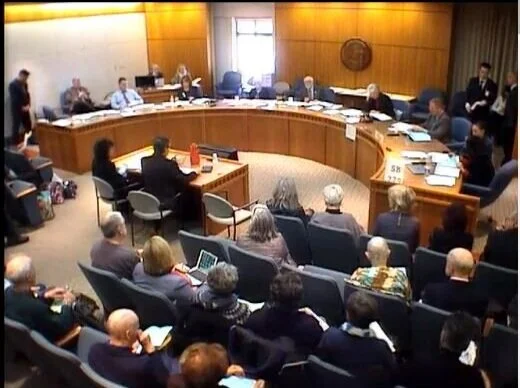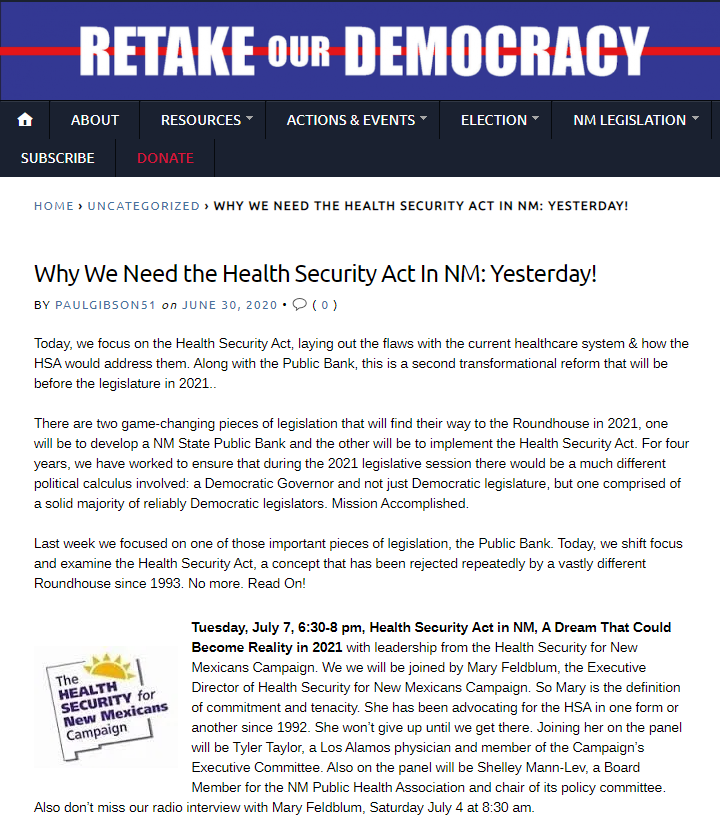“Of all the forms of inequality, injustice in health is the most shocking and the most inhuman.”
On this day, we start with a quote from Dr. Martin Luther King Jr.
Dr. King spoke these words almost 55 years ago, on March 25, 1966, at the second convention of the Medical Committee for Human Rights in Chicago. Unfortunately, as COVID-19 has made all too clear, injustice in health care access and health outcomes continues to be a huge problem. The Health Security Plan seeks to address this.
2021 Legislation: Health Security Planning and Design Board Act
These last few months, we’ve been working closely with Rep. Debbie Armstrong and Sen. Jerry Ortiz y Pino on the 2021 Health Security bill.
The Health Security Act will not be introduced this year; instead, the Health Security Planning and Design Board Act will begin the next phase of creating our own health plan that covers most New Mexicans. This legislation establishes a process to start developing the details of the Health Security Plan.
Rep. Debbie Armstrong, Sen. Jerry Ortiz y Pino, and Sen. Bobby Gonzales are the co-sponsors. The bill will start in the house and, once passed, will move on to the senate.
The bill is not quite finished, but Rep. Armstrong expects to be able to introduce it soon. We will, of course, let you know when the legislation is publicly available.
The Health Security Planning and Design Board Act will establish an 11-person board of experts whose sole role is to develop the most effective design for the many elements of the Health Security Plan. There are numerous issues to address that were not spelled out in the Health Security Act, such as how providers and health facilities will be paid, how the bulk purchasing of drugs program will function, and how the appeals process will work for consumers, providers, and health facilities.
The board will be transparent, seek public input, and have the authority to form advisory committees and hire consultants.
Roughly two years later, the Health Security Commission (the 15-member geographically representative body that will run the Health Security Plan) will take over and complete the design process. A cost analysis will then have to be performed of the plan as designed. (The legislature will have to approve legislation to create the Commission, as well as to enable the Plan to begin enrollment.)
NM Legislature Convenes Tomorrow
The 2021 legislative session begins Tuesday at noon. While much will be different this year, the underlying legislative process remains the same. Check out our legislative process flyer for some basics about the legislative process—and for some of what goes on behind the scenes.
In past years, you have mobilized to make your voices heard. You've called your legislators’ offices at the capitol or visited in person to talk to them. You've attend committee hearings in a show of support or stood up to testify on behalf of Health Security.
Because of the pandemic, we will have to use different ways, like email, to connect with our legislators in the next 60 days. Right now, personal letters to legislators are a powerful tool.
As the session progresses, we'll be giving you guidance on how to be most effective in contacting your legislators and how to testify (virtually) during committee hearings.



















